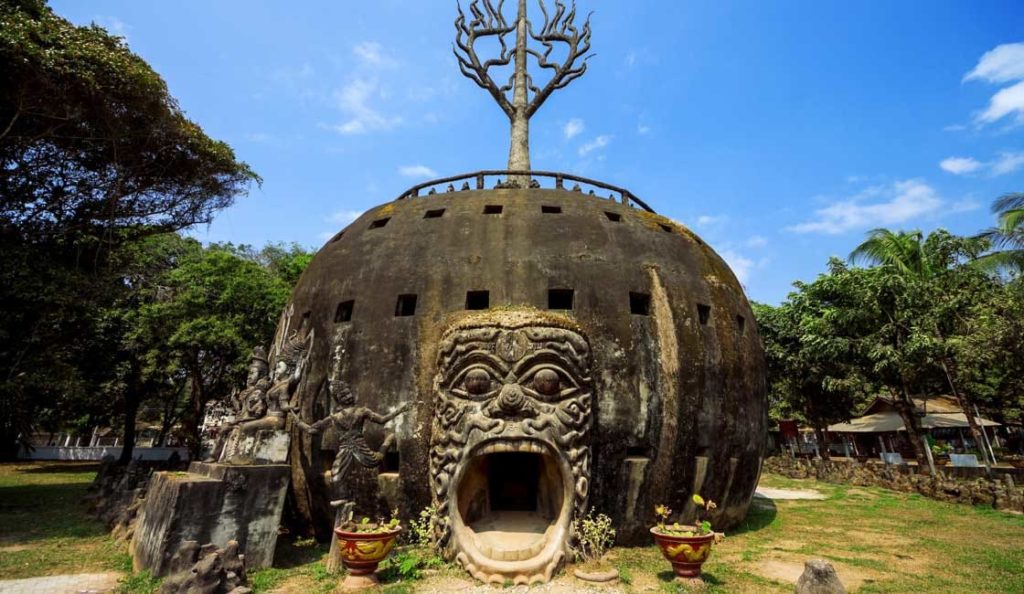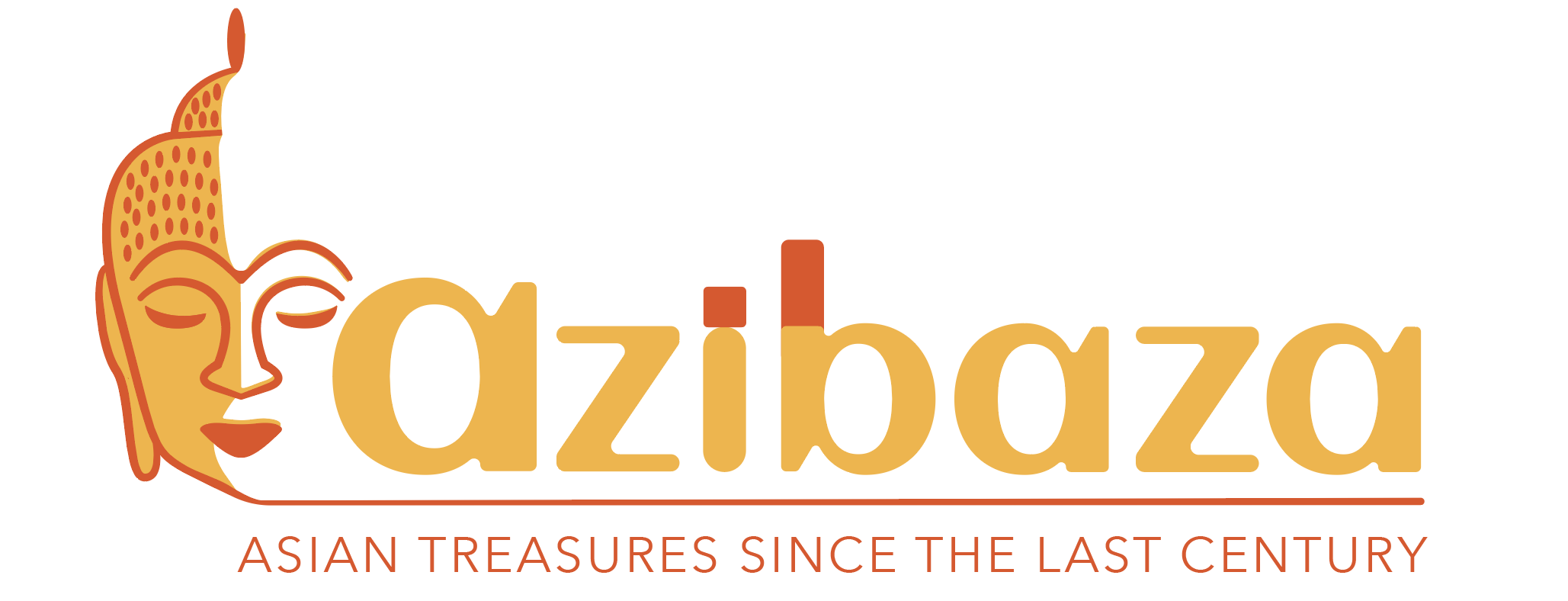The Buddha Park near Vientiane is one of the most bizarre and rewarding attractions in Laos and not be missed.
Laos is a Buddhist-majority country in Southeast Asia and is a great place to backpack through. Laos is often visited as a part of a larger tour in Southeast Asia – including the more popular countries of Thailand and Vietnam. Southeast Asia is an easy region of the world to visit with an American passport, and it is full of awe-inspiring wonders.
The capital of Laos is Vientiane. Vientiane is nestled on the banks of the mighty Mekong River, gazing directly across to Thailand. One of the top attractions within easy reach of Vientiane is Buddha Park. Buddha Park is a park full of interesting mostly concrete statues and scenes from Buddhist mythology.
The Buddha Park has over 200 Hindu and Buddhist statues and is regarded as one of the leading tourist attractions in the area.
The statues are built out of reinforced concrete, and their design is unique, ornate, and sometimes even bizarre. Over the years, there has been some decay on some of the statues, and a couple have toppled over. Visitors who did not know that the park is only around 60 years old may assume it is hundreds of years old.
While there are many sculptures of Buddha in the Buddha Park, the statues are mostly of other things, including humans, gods, demons, animals, and more. Hindu gods like Shiva, Vishnu, and Arjuna are represented. Buddhism and Hinduism are somewhat related, with some overlap in teachings. Buddhism arose in India before Hinduism (it is not uncommon to see Hinduism mixed with Buddhism in Thailand).
The largest single statue in Buddha Park is a massive 40-meter-long (130-foot-long) statue of the reclining Buddha. The reclining Buddha is a representation of Buddha as he was dying and passed into the afterlife. He is depicted lying on his side with his head propped up by his hand, calm and with a content expression.
The story of the park began in 1958 when a man called Luang Pu Bunleua Sulilat decided to build the park and integrate Hinduism and Buddhism. With political problems in the country in the 1970s, he fled to Thailand, where he built a second sculpture park. Both of his sculpture parks are located on the Mekong River next to the Thai-Lao border.
The single most remarkable structure in Buddha Park is a large sculpture-almost-building sort of resembling a giant pumpkin. Visitors can go inside the structure and explore. The entrance is through a large open mouth – the open mouth of a 3-meter-tall demon head. There are inner chambers within the structure with circular corridors running around the outside within the structure. In the inner chambers are many small sculptures representing Buddhist mythological scenes. The three levels depict Hell, Earth, and Heaven.
From the outer corridor, people can peer into the inner champers from openings or enter the inner champers. People can climb up the stairs through the different levels all the way to the top of the structure on top of the demon’s head. From there, visitors can enjoy a great view of the rest of the Buddha Park and its many bizarre sculptures.
Some of the small statues within the demon head are showing signs of aging. While it is unclear if there are any plans for maintenance or restoration, the aging state of the statues makes them appear to be ancient.
Buddha Park is located 25 kilometers or 15 miles southeast of Vientiane, just next to the Mekong River. It can be reached by taxi or by guided tour.
Anyone can visit by themselves, but it is also rewarding to visit with a guide, as for most Western visitors, the significance of the statues will be lost.
Admission Fee: Nominal
Opening Hours: 8.00 am to 5 pm (Sunday 10.00 am to 3.30 pm)
There is paid admission, but the entrance fee is mostly nominal.
After visiting the capital of Vientiane in Laos, take the brand-new train to the UNESCO-listed Laotian town of Luang Prabang, set deep in the mountains of Southeast Asia.





